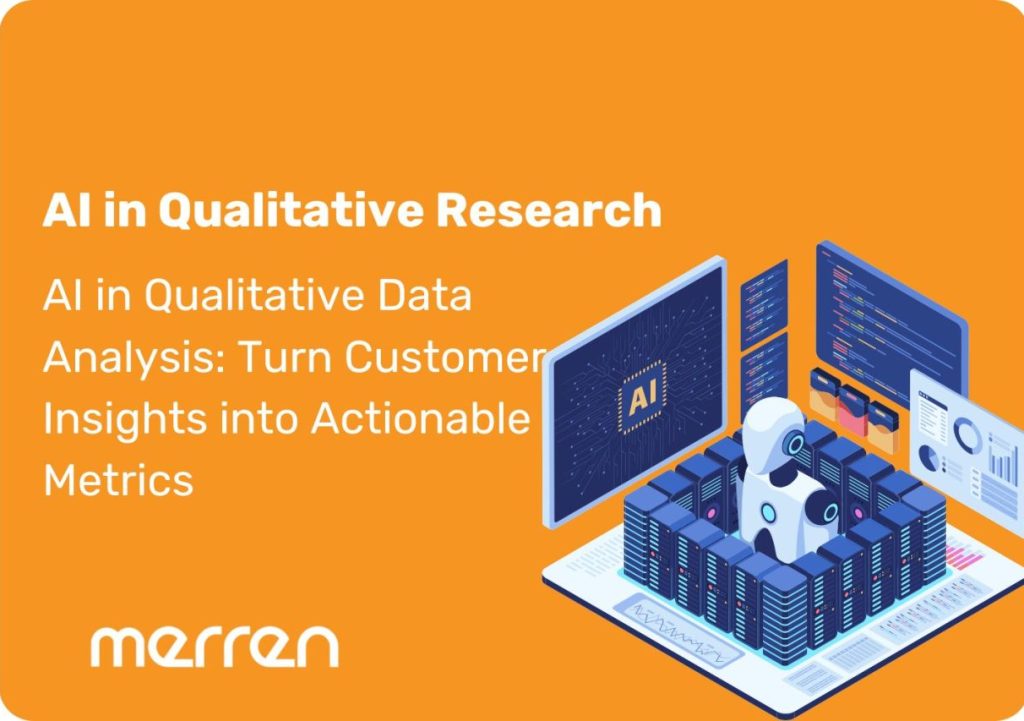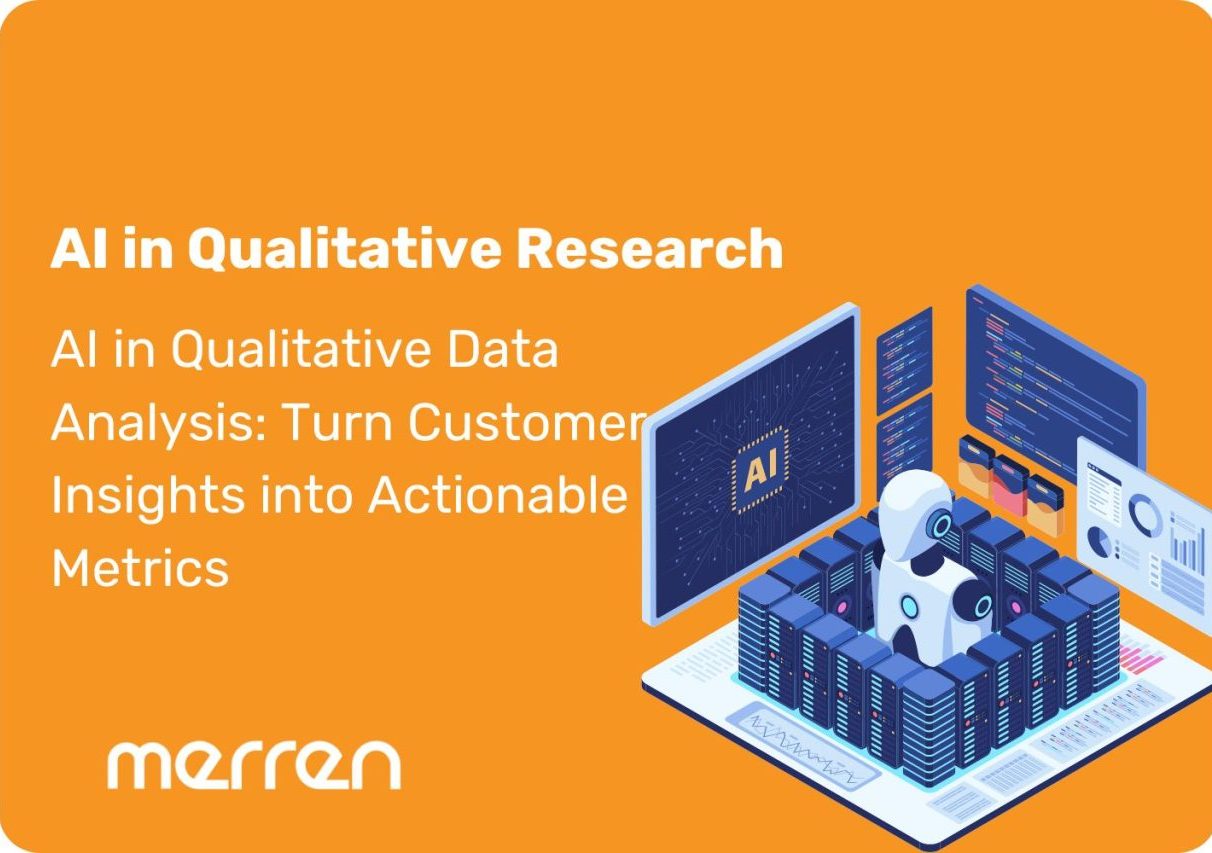Qualitative research has evolved far beyond traditional focus groups, interviews, and manual coding of responses. Digital channels now collect vast amounts of open-ended feedback in text, audio, video, and image formats. But the challenge remains the same: how do you process and interpret this unstructured data quickly and accurately?
In this blog we will discuss how AI can enable professionals to assess complex data into actionable insights.
What is Qualitative Data Analysis?
Qualitative data analysis will assess non-numerical data to understand customer behaviors, emotions, and motivations. Qualitative data is the collection of customer interviews, open-ended survey responses, social media conversations, or even recorded customer support calls. While quantitative research focuses on numerical trends, qualitative research aims to tell the story behind the numbers.
Traditionally, researchers manually coded and categorized this data. This takes weeks to identify meaningful themes. Manual analysis is prone to bias, inconsistency, and scalability issues. To counter these issues, AI algorithms can scan through massive datasets in minutes, identify recurring themes, detect sentiment, and highlight anomalies.
Why AI is a game-changer for researchers
AI in qualitative research is not about replacing human expertise. It is about amplifying it. A skilled researcher brings context, empathy, and interpretative nuance. AI acts as a powerful assistant, handling the labor-intensive aspects of qualitative analysis. Researchers can focus on drawing meaningful conclusions and crafting strategies.
People are experimenting with various AI softwares including ChatGPT and open AI. However, currency AI capabilities are still under review. They might not be able to generate intrinsic datasets as required. The eyes are on the future so that these AI components integrate along with the expertise of a human researcher. It is indeed the best of both worlds, mainly to save time and remain accurate and unbiased with the process.
For marketers, this means faster campaign optimization. For CX professionals, it means quicker service improvements. For researchers, AI for digital qualitative research means the ability to scale without compromising quality.
How can AI Augment Qualitative Data Analysis?
1. Identify themes from voice responses
AI powered platforms have the ability to scan unstructured text, audio, and video to detect recurring keywords, topics, and themes. They can do this in real time to see which ideas dominate customer conversations. Thousands of transcripts will go through instant speech to text analysis and will run through AI analysis immediately.
2. Customer sentiment analysis
Going beyond basic positive or negative sentiment, AI-powered platforms like Merren identifies nuanced emotions such as frustration, excitement, or uncertainty. Sentiments are like a forecast on future customer behaviors based on historical qualitative feedback. This is especially useful for identifying early warning signs of churn or their probability of moving to a competitor.
3. AI handles multi-format data
In digital qualitative research, data comes from multiple sources. Researchers work with a variety of formats, including text-based survey responses, call center transcripts, interview recordings and even social media content. AI has the capability to handle all formats seamlessly without overloading human resources.
4. Reducing researcher bias and blind spots
There can be multiple limitations where a human researcher may miss critical insights from people. It can be geographical location, technological gaps, communication mishaps or just plain bias or personal agenda. AI can overlook these problems and bring objective data to the table. Artificial intelligence ensures that coding and categorization remain consistent across datasets minimizing subjectivity in analysis.
5. Real time insight presentation
In-moment presentation includes speech to text transcripts, understanding emotional drivers in speech, key themes and patterns and data overview in hours. Merren’s AI-driven engine can create reports within hours. This speed enables CX professionals and marketers to act on fresh insights before customer sentiment shifts.
Use Cases for AI in Qualitative Data Analysis
- Customer Experience Audits: Analyze open-ended survey responses and customer service transcripts to identify pain points.
- Brand Perception Studies: Understand how customers describe your brand across social channels and direct feedback.
- Product Development Research: Gather insights from beta testers and early adopters to guide product roadmaps.
- Event Feedback Analysis: Process in-the-moment customer impressions from conferences, trade shows, or online webinars.
- Employee Feedback Programs: Evaluate sentiment and engagement levels through internal surveys and focus group discussions.
The Merren Advantage for Digital Qualitative Research
Merren is built for marketers, CX professionals, and researchers who need both speed and depth in their qualitative research. With its intuitive interface, global scalability, and multi-channel integration, Merren fits seamlessly into your research workflow.
Whether you are running a small-scale in-depth interview study or a large-scale customer sentiment project, Merren delivers:
- AI assisted research for any industry or audience size
- Intelligent categorization of responses including sentiment analysis.
- Cross-source analysis for holistic insights.
- Clear, actionable reports for any department and campaign.
Conclusion
Qualitative research remains one of the most powerful ways to understand human behavior. However, traditional methods can’t keep pace with the volume and variety of feedback in today’s digital world. With Merren’s AI assisted research analysis, you get the best of both worlds: the depth of qualitative insights and the speed of AI-driven processing.

